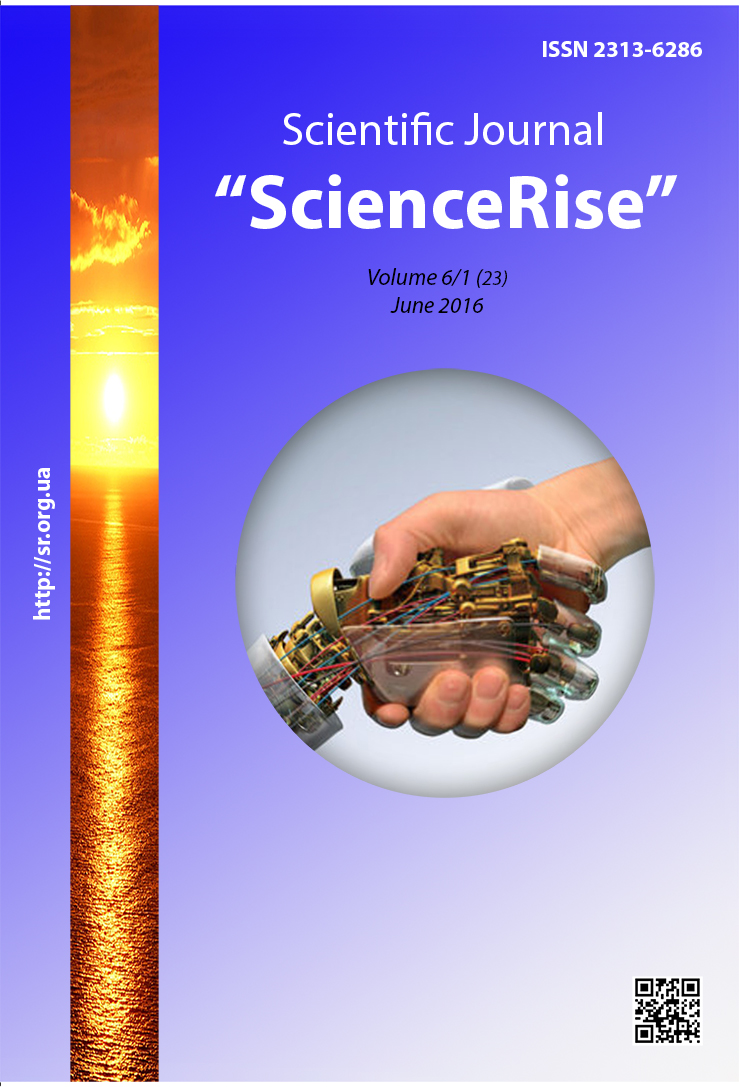The model of analysis of variance of plant phenology on the example of spring rape
DOI:
https://doi.org/10.15587/2313-8416.2016.71575Keywords:
vegetation, phenology, phase of growth, spring rape, analysis of variance, statistical testAbstract
An example of analysis of variance of phenology development of spring rape plants in the conditions of Podolia (middle Transnistria; geographical coordinates are latitude – 48°40', longitude 26°35') of South West forest-steppe of Ukraine is given. The topicality of the topic is that because of their nature, the results of phenological research (observations) aren’t mathematically processed in virtue of its features. Filling this gap is the aim of the proposed article
References
Zaytsev, H. N. (1984). Matematycheskaya statystyka v еksperymental'noy botanyke [Mathematical statistics in experimental botany]. Moscow: Nauka, 424.
Spano, D., Cesaraccio, C., Duce, P., Snyder, R. L. (1999). Phenological stages of natural species and their use as climate indicators. International Journal of Biometeorology, 42 (3), 124–133. doi: 10.1007/s004840050095
Metodu fenomonytorynha [Methods phenological monitoring] (2008). Ekaterinburg: Ural state University, IONS, "Ecology and nature management", 180.
Nylov, V. N. (1980). K metodyke statystycheskoy obrabotky materyalov fenolohycheskykh nablyudenyy [To the methods of statistical o the methods of statistical processing of materials of phenological observations]. Botanical journal, 65 (2), 282–283.
Kupriyanov, A. N. (1999). Osnovu yntroduktsyy rastenyy [Fundamentals of plant introduction]. Barnaul: Publishing house of Altai state University, 80.
Lazareva, S. M. (2011). Yspol'zovanye metodyk obrabotky dannukh fenolohycheskykh nablyudenyy (na prymere predstavyteley semeystva Pinaceae Lindl.) [The use of data processing methods phenological observations (for example, representatives of family Pinaceae Lindl.]. Izvestiya Irkutsk state University. Series “Biology. Ecology”, 4 (2), 56–65.
Yvlev, V. Y. (2014). O statystycheskoy obrabotke fenolohycheskykh dat v botanycheskykh yssledovanyyakh [About aggregating phenological dates in Botanical research]. Proceedings of the National Academy of the Republic of Kazakhstan. Series biological and medical, 1, 44–48.
Guidelines for the conduct of tests for distinctness, uniformity and stability (1996). Geneva. Available at: http://www.upov.int/edocs/tgdocs/en/tg036.pdf
Konovalov, Y. B., Berezkin, A. N., Dolgodvorova, L. Y. et. al; Konovalov, Ju. B. (Ed.) (1987). Praktykum po selektsyy y semenovodstvu polevukh kul'tur [Workshop on breeding and seed production of field crops]. Moscow: Agropromizdat, 71.
Kalinin, M. I., Eliseev, V. V. (2000). Biometriya: Pidruchnyk dlya studentiv vuziv biolohichnykh i ekolohichnykh napryamkiv [Biometrics: a Textbook for students of biological and ecological areas]. Nikolaev: MF Kyiv-Mohyla Academy, 204.
Fysher, R. A. (1958). Statystycheskye metodu dlya yssledovateley [Statistical methods for research workers]. Moscow: Education, 268.
Downloads
Published
Issue
Section
License
Copyright (c) 2016 Юрій Володимирович Хмелянчишин

This work is licensed under a Creative Commons Attribution 4.0 International License.
Our journal abides by the Creative Commons CC BY copyright rights and permissions for open access journals.
Authors, who are published in this journal, agree to the following conditions:
1. The authors reserve the right to authorship of the work and pass the first publication right of this work to the journal under the terms of a Creative Commons CC BY, which allows others to freely distribute the published research with the obligatory reference to the authors of the original work and the first publication of the work in this journal.
2. The authors have the right to conclude separate supplement agreements that relate to non-exclusive work distribution in the form in which it has been published by the journal (for example, to upload the work to the online storage of the journal or publish it as part of a monograph), provided that the reference to the first publication of the work in this journal is included.

